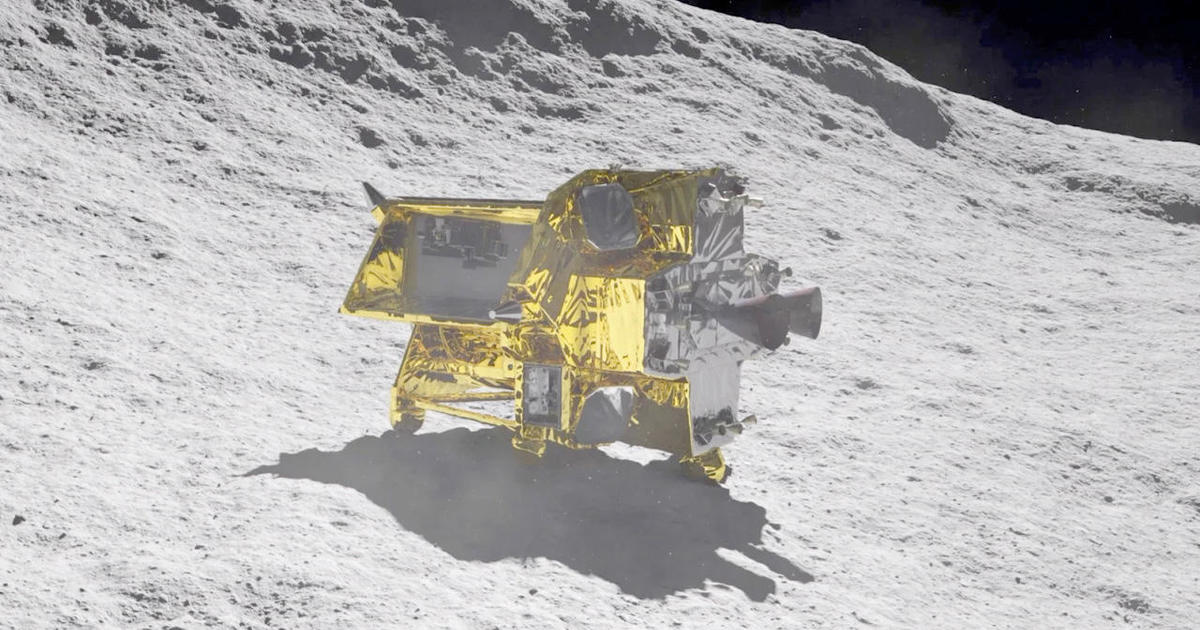2024 is off to a great start for proving that space is hard.
Joking aside, it sounds like the mission was mostly successful in demonstrating a precision landing, they just had an electrical connection fail. Given the vibrations that are experienced in launch, it could have been anything from a loose connector to a bad solder joint. Just one small problem and the whole mission ends up lost. So ya, space is hard.While I get your point, typically numerous redundancies are built into something that has no realistic ability to be serviced. This would indicate either a lack of redundancies, or that multiple redundancies failed. While every experiment you learn from isn’t a failure and negative results are important too, this is likely a larger derivation from optimal than you think.
But NASA’s Deep Space Network, which sends commands and receives data from spacecraft across the solar system, was receiving telemetry from SLIM or one of the tiny rovers – or both – an hour after landing.
At the post-landing news conference, JAXA officials confirmed flight controllers were receiving telemetry from both SLIM and LEV-1, which was designed to beam data directly back to Earth. LEV-2 relays data back through SLIM.
“We do consider LEV-1 and LEV-2 to have been successfully separated, and we are making an effort to acquire data at this point in time,” said Kuninaka.
It sucks but at least they’re able to deploy both mini rovers, so maybe the mission is mostly successful? No idea what those mini rovers are capable of though, their project website seems to be available only in japanese: https://www.isas.jaxa.jp/home/slim/SLIM/index.html
They even have a VR video, an AR 3d model, and a web game on their website: https://www.isas.jaxa.jp/home/slim/SLIM/gallery/index.html
That’s good news, it’s also possible last I heard that it is upside down solar panels are facing east instead of the intended west, which would mean that it might come back up once the sun has moved across the sky in a week or so.
Here is an alternative Piped link(s):
Detailed analysis by Scott Manley
Piped is a privacy-respecting open-source alternative frontend to YouTube.
I’m open-source; check me out at GitHub.
This is the best summary I could come up with:
As a result, mission managers said, the otherwise apparently healthy Smart Lander for Investigating the Moon, or SLIM, was expected to exhaust its batteries within hours of touchdown, leaving it powerless and unable to receive commands or transmit telemetry and science data back to Earth.
There’s hope the probe could “wake up” at some point, assuming the spacecraft landed in the wrong orientation and the angle between the sun and the solar cells improves enough over time to generate enough power, but officials said that’s not at all certain.
Most recently, the Peregrine lander, built by Pittsburgh-based Astrobotic, was stranded in a highly elliptical Earth orbit after a valve malfunction caused a propellant tank to rupture shortly after launch Jan. 8.
During a separate news briefing Friday, Astrobotic CEO John Thornton praised company flight controllers for managing to keep the spacecraft alive as long as possible, activating its science payloads, firing thrusters to re-orient the craft and collecting data that will be fed back into the design and operation of a larger moon lander — Griffin — scheduled for launch late this year.
JAXA’s moon lander was built to achieve two major objectives: to demonstrate a high-precision landing system capable of guiding the probe to touchdown within 100 meters, or about the length of a U.S. football field, of its planned target; and to test an innovative lightweight design allowing smaller spacecraft to carry more sensors and instruments.
Realtime telemetry showed the vehicle precisely following the planned trajectory, pausing several times along the way to photograph the surface below and compare the view to on-board maps to ensure the expected high-precision landing.
The original article contains 1,027 words, the summary contains 272 words. Saved 74%. I’m a bot and I’m open source!
Japan’s current capabilities are officially better than the US and Russia, but worse than China and India.
Hm.
Edit: for anyone who questions this, answer me: when was the last Russian moon landing? The last American moon landing? How many people who worked on those missions do you think still work for Roscosmos/NASA today?
I think ‘age of the last moon landing’ is a pretty piss poor metric for how well a space program is doing. Remember two years ago when NASA landed the most advanced rover ever built and a friggin helicopter on mars? Remember how the helicopter was only designed to last a handful of sols and flights but is still to this day flying actual survey missions scouting for the rover?
I’m sorry but I think your metric for what ranks various space agencies capabilities is absolutely hog wash.
EDIT: You also seem to have missed in your assessment, the primary mission goal of the SLIM Lander. Japan was testing a landing technology that would allow vehicles to land ‘within 100 meters of a chosen landing site’. A goal JAXA achieved with this mission despite the solar panel issue. To give some context, up until now most landing sites are chosen for a margin of error up to several Kilometers.
Yeah how recently did you do something completely new. Japan and India definitely get credit for moon landing, it’s difficult and impressive. But it’s also not pushing any boundaries anymore.
Did you miss the second half of my comment?
Usa landed on mars and europe landed on a asteroid I think
Hayabusa - JAXA - Asteroid probe that returned surface samples from 25143 Itokawa
Mars Perseverance 2020 - NASA - First powered atmospheric flight test on another planet
Rosetta - ESA - Comet orbiter and lander.
Idk what op is on about.
What a stupid metric to base competency off of. NASA has successfully landed on Mars 6 times in the last 20 years; the most recent of which included a drone, achieving the first ever controlled powered flight on another planet(and it’s still going, over 60+ flights more than the “optimistic” 5 that were planned).
Landing on Mars is exponentially harder than landing on the Moon, and only NASA and CNSA(China) have fully succeeded at it(The USSR’s Mars 3 only gets partial credit imo), and only NASA has done it more than once(9 times total, to be specific)
But when was the last time they landed on the Moon?
NASA tells us they’ll have Artemis ready by, what, next year?
Edit: oops they delayed it
But when was the last time they landed on the Moon?
1972, which was the last time NASA even bothered attempting to land on the moon at all(well, soft land. They’ve sent up an impactor since then). It’s not like they kept trying and suddenly started failing, they just never planned another landing mission until Artemis 2 and 3.
Tell me though, what did Apollo 17 have that every moon mission since has not had? Oh yeah, people, and not even for the first time ever, no. That was the 6th time in a roughly 3 year timeframe that NASA put people on the moon. Oh yeah, and on all 6 of those occasions, and even the disastrous Apollo 13, all the astronauts made it home safe.
So the last time NASA even tried to land on the moon, they 100% successfully did so, while doing something for the 6th time that no other space agency to this day has done before or since.
Let me know when JAXA puts people on the moon, and then we can talk about them being more capable than NASA.
NASA tells us they’ll have Artemis ready by, what, next year?
Yawn, I’m so tired of this argument. Literally all you guys ever say nowadays when trying to denigrate NASA is “You really think Artemis will launch on time? lol”. I’ve been hearing the same low effort argument since well before Artemis 1 launched. How about expounding on it for once and actually explain why you think Artemis will fail, as you clearly think it will? Not be delayed, fail. Everyone paying attention(clearly you weren’t, or you would have already known and not needed to edit your post) knew for over a year prior to the official delay announcement that A2 and A3 would be delayed, that does not mean anything as far as the success of the actual mission goes.
Sure, congress could slash their budget, as they’re often prone to doing, which could possibly kill the program, but that still says nothing about NASA’s technical capabilities.
NASA isn’t interested in sending robots to the moon anymore. They are focusing their efforts on sending people to the moon and building a lunar space station. In 2022 they successfully send a unmanned spacecraft, the Orion, in an orbit around the moon and returned it to Earth as it’s first step towards a manned mission.
Also NASA has successfully send multiple rovers to Mars in the last two decade. And flown a mini helicopter in Martian atmosphere.
So by that logic, I guess you’re much better at pissing your bed in your sleep than anyone older than you, then.
I mean, yes?
Blatantly false, US space program is way ahead of any other nation is on course to be the first to have a moon base (mission planned for 2028) and first asteroid harvest around 2050 or earlier







